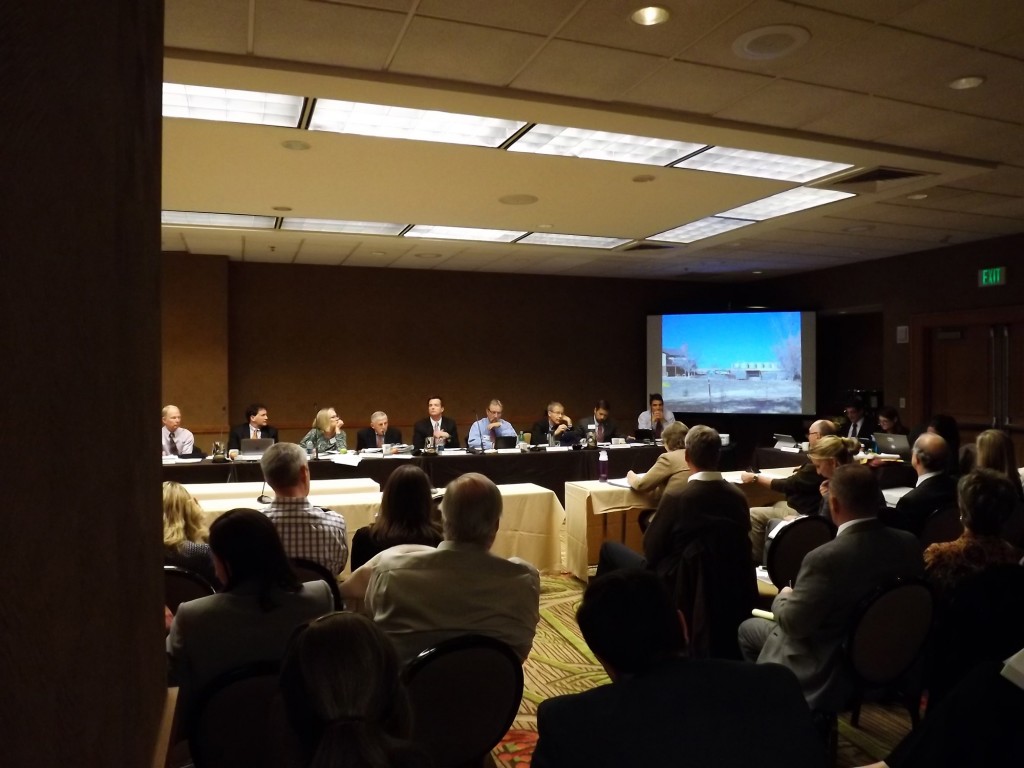Parties spoke today at the COGCC rulemaking hearing in Denver, Colorado
A crowded room listened intently today as several parties shared their concerns with the Colorado Oil and Gas Conservation Commission (COGCC) over new rules being put in place after study and recommendation by the Colorado Oil and Gas Task Force.
In September 2014, Colorado Governor Hickenlooper created the task force in a compromise over pro- and anti-hydrocarbon development initiatives that were removed from the November ballot. The COGCC released the proposal for two new regulations based on the task force’s recommendations in early October 2015.

Rulemaking hearing for Colorado Oil & Gas Conservation Commission Nov. 16, 2015, photo: Oil & Gas 360
The two rules COGCC hopes to pass are directed at mitigating tensions between local communities and oil and gas developers. One rule would call for companies to submit notice to the local government when developing a multi-well pad with cumulative measured depth exceeding 90,000 feet, or with on-site storage capacity in excess of 4,000 barrels, and are within 1,000 feet of at least 22 homes. The second rule would require operators to share their five-year drilling programs with local governments so that they can be incorporated into local planning and development.
The main concern that came up during comments to the COGCC today was whether or not the regulations were too narrow. Mark Gruber, mayor pro tem of Erie, Colorado, as well as others who made comments before him, said that the qualifications regarding the size of the operations being regulated should be removed, and that a sliding scale should be put in place that set more regulations as companies moved operations closer to homes and business.
“There should be mitigation on a sliding scale for all facilities, not just large-scale ones,” he said to the COGCC panel. “The closer to homes and schools operations get, the more mitigating regulations should be put in place.” The mayor pro tem went on to say that setting regulations specifically inside 1,000 feet could prompt companies to move operations outside of the proposed range, leaving them unregulated.
Speaking before Gruber, an attorney representing mineral owners, reminded the panel that the rights of those who own the minerals in the ground were also an important factor in the decision making that was taking place.
“You have been charged with taking a responsible and balanced approach to protecting the public and private interests at stake here,” she said. “Those who own the mineral rights need help protecting the value of their interests as much as the surface owners want protection of their own.” Over-regulating could hurt the value of their mineral interests, a factor in the equation she hoped the COGCC would keep in mind during the rulemaking process.

